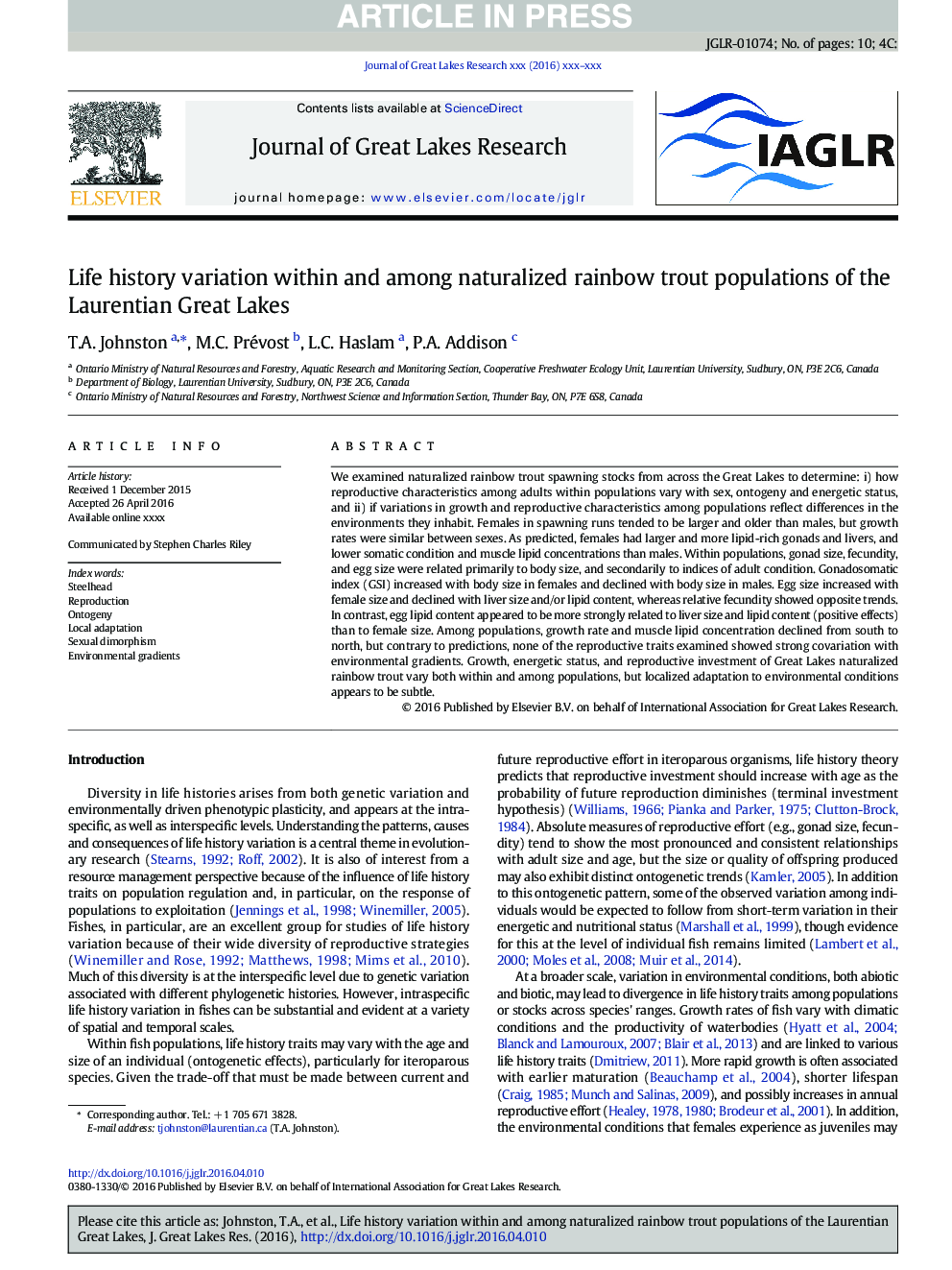| Article ID | Journal | Published Year | Pages | File Type |
|---|---|---|---|---|
| 5744756 | Journal of Great Lakes Research | 2016 | 10 Pages |
Abstract
We examined naturalized rainbow trout spawning stocks from across the Great Lakes to determine: i) how reproductive characteristics among adults within populations vary with sex, ontogeny and energetic status, and ii) if variations in growth and reproductive characteristics among populations reflect differences in the environments they inhabit. Females in spawning runs tended to be larger and older than males, but growth rates were similar between sexes. As predicted, females had larger and more lipid-rich gonads and livers, and lower somatic condition and muscle lipid concentrations than males. Within populations, gonad size, fecundity, and egg size were related primarily to body size, and secondarily to indices of adult condition. Gonadosomatic index (GSI) increased with body size in females and declined with body size in males. Egg size increased with female size and declined with liver size and/or lipid content, whereas relative fecundity showed opposite trends. In contrast, egg lipid content appeared to be more strongly related to liver size and lipid content (positive effects) than to female size. Among populations, growth rate and muscle lipid concentration declined from south to north, but contrary to predictions, none of the reproductive traits examined showed strong covariation with environmental gradients. Growth, energetic status, and reproductive investment of Great Lakes naturalized rainbow trout vary both within and among populations, but localized adaptation to environmental conditions appears to be subtle.
Related Topics
Physical Sciences and Engineering
Earth and Planetary Sciences
Earth and Planetary Sciences (General)
Authors
T.A. Johnston, M.C. Prévost, L.C. Haslam, P.A. Addison,
